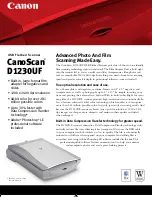
20
MPS4264
Section 3: Operation
coefficients and perform some checks. These options are:
START: Click this to initiate a calibration/validation
sequence. This sequence will include a calibration
and/or a validation as defined by the options that are
enabled with the “Calibration” and “Validation” check
boxes.
STOP: Stop the current operation, whether a calibration
or a validation.
GET REPORT...: Download the latest validation report.
This will be saved as a .CSV file called “Report.CSV”
GET TABLE...: Download the current calibration coef-
ficients. This will be saved as a .txt file called “Insert.
TXT”
CAL/VAL POINTS CHECK: Performs a check and outputs
the temperatures and pressures to be used during
the calibration/validation based on the pressure and
temperature min/max variable settings.
DELETE ALL: Deletes the current calibration coefficients
from the module.
ZERO CAL: Performs a zero correction calibration, called
“CALZ.” Any pressures applied to the module during
the CALZ will be subtracted out as offset.
SAVE: Issues a “save” to the module saving the current
settings and calibration coefficients.
Once all of the Calibration/Validations configurations have
been set, click the ‘Submit’ button at the bottom of the
Cal-Val screen
. At this point, clicking ‘Start’ in the header
bar will initiate the calibration and/or validation sequence.
If a calibration is being performed, then new calibration
coefficients will be generated. These will be uploaded to
the module but may or may not over-write the existing
calibration coefficients depending on the exact setup and
the previous calibration coefficients. Before beginning a
calibration, the old coefficients should be deleted. This is
done by clicking the ‘Delete All’ link in the header bar. If it
is desired, the existing coefficients can be backed up before
being deleted using the ‘Get Table...’ link. It is recom-
mended that after a calibration has been performed, the
new calibration coefficients should be retrieved from the
MPS and backed up in a safe location.
After a validation has been performed, the validation
report will be generated and saved to the flash memory of
the MPS4264. This report can be retrieved using the ‘Get
Report...’ link. The report will be downloaded as a .CSV file
for easy viewing in Microsoft Excel or similar.
Zero Cal
The MPS4264 was designed for maximum sensor stability
and extensively tested for operations with no zero correc-
tion calibrations. For many applications the ‘Zero Cal’ (aka
CALZ) feature will not be needed. Every sensor behaves in
a unique way so it is impossible to outline specific guide-
lines on when the CALZ will need to be used, but for most
cases where the module is operating between 15°C and
40°C no CALZ should be needed. Scanivalve recommends
monitoring and checking the module’s readings with zero
pressure applied to determine if sensors have drifted and if
a CALZ needs to be performed.
Web Server: “Remote” Screen
The MPS4264 incorporates a feature to allow multiple
MPS4264 units to communicate with one another, allowing
certain commands to be sent to an single “master” unit
and then rebroadcast out to the selected “slave” units.
This makes the user interface much simpler and allows
for more accurate synchronization between units. This
function uses the network multicast feature to establish
an MPS4264 group or “cluster.” While the multiple-unit
commands and interface is limited through the web server,
the “Remote” tab on the web server allows you to search
for any MPS4264 scanners that are in the same “cluster” as
the MPS you are currently communicating with is.
To search for MPS scanners that are in the same “cluster”
as your master device, simply click “Find Remote Devices”
in the upper navigation bar. A pop-up screen will appear
advising you that the master is searching for slave units.
Once the pop-up closes, you will be returned to the web
server. If any modules are discovered in the cluster, they
will be listed including their serial number, IP address and
pressure range as shown in Figure 3-13 below.
Figure 3-13: Web Server Remote Screen
In addition to searching for other MPS4264’s in the cluster,
the “Remote” page of the web server allows you to change
the unit’s current multicast address. This can be set in the
Summary of Contents for MPS4264
Page 1: ...MPS4264 Miniature Pressure Scanner Hardware and Software Manual Software Version 2 07...
Page 2: ......
Page 3: ......
Page 6: ...INTENTIONALLY LEFT BLANK...
Page 12: ...6 MPS4264 Section 1 Specifications INTENTIONALLY LEFT BLANK...
Page 18: ...12 MPS4264 Section 2 Introduction INTENTIONALLY LEFT BLANK...
Page 32: ...26 MPS4264 Section 4 Hardware INTENTIONALLY LEFT BLANK...
Page 38: ...32 MPS4264 Section 5 Software INTENTIONALLY LEFT BLANK...
Page 81: ...75 MPS4264 Section 6 Maintenance INTENTIONALLY LEFT BLANK...
Page 86: ...80 MPS4264 Section 6 Maintenance INTENTIONALLY LEFT BLANK...
Page 87: ...81 MPS4264 Appendix INTENTIONALLY LEFT BLANK...
















































